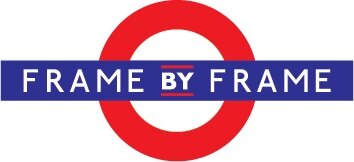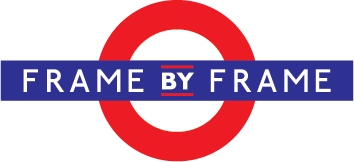Frequently Asked Questions
We’ve been in the game for a long time. Sourced from our conversations over the years, we’ve answered your burning questions about the inner workings of picture framing, from conservation to glass type.
Does my artwork need UV protecting glass?
Whether a piece needs UV Glass or not depends to some extent on the way it is produced. Ultra Violet light can not only fade an image, it can harm the paper over time as well.
If the piece is of particular personal, historical or financial value, it is recommended that UV Glass be used.
Below are rule of thumb judgment calls we use to help dictate our advice during the consultation process.
Posters:
The majority of posters are printed in bulk quite cheaply using the offset printing process, and as a result the inks can fade quite quickly. If the piece has value to you or is valuable in some other way, we would highly recommend UV Glass. Having said that there's a proliferation of digitally printed items in the market also; which are somewhat variable in their light-fastness.
Magazines, Books, Advertising Circulars and Posters:
Majority of these fade quite quickly for the same reason as posters in general - they are printed, for the most part, by the offset printing process which is not really intended for long term exposure to daylight..
Prints:
Whether your print will need UV Glass or not depends, again, on its printing process, and there is no fixed standard way this is done.
Digital Prints:
There's a number of processes available under this umbrella, which vary from very prone to fading (typically home-user ink jet which fade quickly) to high-end inkjet which is at the opposite end of that spectrum (see Giclee printing below). Generally, quality art reproductions and limited edition prints are printed using light stable inks and often come with a certificate of authenticity which talks about the printing process and the light-fastness.
Giclee Prints:
Giclee is high-end inkjet, and are normally coupled with good quality paper. Many high quality limited edition prints are printed using the Giclee printing process, which uses archival ink that is highly resistant to fading..
Screenprint:
Screen prints are very robust and not prone to fading. However the paper stock on which the work is printed can be of variable quality; and all papers are prone to damage from exposure to UV light. There is a lot of quality art in the market using this process and "name" artist's work will always benefit from the use of UV glass for safety.
Paintings:
Watercolour paintings tend to be quite delicate and are prone to fading. Acrylic paintings are a bit more robust but can still benefit from UV Glass. As with all paints, there is variation between Student grade paint and Artists or Professional grade paint. The cheaper the paint, the more likely it is to fade. Oil Paintings tend to be a lot more robust and don’t generally glass at all because they can be cleaned if they have been sealed properly, but some choose to put glass over them to protect them from light and the elements and to prevent the problem of having to clean them.
What is archival framing and why should I do it?
Archival framing refers to framing with archival acid-free boards and adhesives as well as the use of UV filtering glass. The UK based Fine Art Trade Guild has published descriptions of 5 levels of framing standards which all fall at a particular price point. The level of protection for the framed item decreases as the price decreases.
There are three main killers for a framed artwork over time: acid from the board it is in contact with, UV light and moisture. The key elements of archival framing come from creating an acid free environment with our use of good quality mat and backing boards, using UV, or Museum Glass where called for, to protect from Ultra Violet light and ensuring the work is not in direct contact with the glass to prevent them sticking together over time.
What this does is ensure your artwork lasts as long as possible in the condition with which it went in the frame.
The glass broke, now what?
Many people make the mistake of lying frames facing up after the glass breaks. The best thing to do is remove any loose shards in the middle of the break so they don't stab the work. Then lie it face down on a sheet, blanket or towel that your aren't too attached to. This stops the glass from touching the work as much as possible and will hopefully minimise any damage caused by the broken shards. Keeping the artwork face up gives the glass the opportunity to slide around on the work and will certainly cause damage.
Bring it in to us and we can organise a reglaze for you and put your frame back in working order.
What are the different types of glass?
Your artwork is precious, and many items are susceptible to fading. Glass with UV filtering qualities will greatly reduce this risk.
We offer 9 different types of glass:
Clear Glass is the cheapest option, but has limited UV filtering qualities as a result.
Conservation Clear UV Glass is the most commonly used for UV protection. It is 99% UV protecting to keep your artwork looking good for years to come.
Traditional Reflection Control Glass achieves reflection control by etching the back of the glass. This can impact the viewing experience. Because we recommend glass never be in contact with the work, this has very limited application. Most of the time, the following products are a better alternative.
Museum Glass and UV70 Water Glass are the modern answer to reflection control. Ultra clear and with very low levels of reflection, in some conditions it looks like there is no glass at all. UV70, at only 70% UV protecting is considered to be the Standard Glass equivalent, and the Museum Glass having all the same reflection control and clarity as the UV70 also has the 99% UV protection, making it the ultimate in glass choices.
Standard Acrylic looks just like Standard Glass, but because it is perspex is is shatter proof. Good if you move a lot, have a very large piece, or are hanging work in a commercial space.
UV Acrylic looks and functions like Standard Acrylic, but with 99% UV Protection like Conservation Clear and Museum GLass.
Museum Acrylic is the optimum product when it comes to glass. With UV protection, clarity and reflection control, break protection and lightness, it has everything. This is a very specialist product, used more commonly by art galleries and museums as their pieces travel a lot, but slowly is working its way out into the general market as consumers discover how great the ‘museum’ properties of this glass are.
Why is my artwork developing brown spots?
This is most often caused by foxing, which is an indication of the artwork having developed high levels of acidity either inherent in the paper the work is on or as a result of the environment in which it is housed (that is either the existing frame or the folder in which it is stored under the bed).
Backing boards are the most common offender here, but older mat boards can cause the same issues. Older framing jobs are less likely to have archival products as they have only in recent years become more commonly used. Many budget framers still use cheap materials which will damage your art over time.
The best way to stop foxing is to remove the item from its current environment and put it into a new frame with all archival boards. If the piece is particularly valuable to you and you would like the have the piece restored, we can get you an obligation free quote from our restorer. Many badly foxed and highly acidic items can be recovered to a remarkable degree in this process. See the "Restoration" section on our Framing Services page for more details.
The paper of my work is discolouring, why?
This could be a number of things, the most likely of which are light or acid damage.
Exposure to Ultra Violet light can result in yellowing paper over a long period of time, so older pieces framed before the UV filtering glass technology was available or affordable may have this problem.
The other issue could be that the boards around the piece are not acid free, and over time this has seeped into the artwork, causing it to discolour. This shows up in brown spots, as mentioned in the above section, but also in the dicolouration of the paper over all.
What does 'acid free' really mean?
There are many products that claim to be acid free, or pH neutral, however this can be misleading as it may only be true of a product at the time of manufacture. Over time though, lignin present in the boards and papers develop acidity. Truly archival acid free products are created to remain neutral permanently, and this is the quality of boards we use in the creation of an archival framing job (see below). They are created either from highly processed alpha-cellulose pulp or from 100% cotton pulp.
The damages caused by an acidic environment can, to a certain extent, be reversed if the effects have already begun to take place. See 'Why is my artwork developing brown spots?' above.
I've damaged the frame, can it be fixed?
Some frame damage can actually be repaired! If you have a modern frame, it may be possible for us to just patch it up but failing that, replace the length that was damaged. If the damage is too extensive, we can replace just the frame around it, which is a lesser cost than re-framing it from scratch (though some take the opportunity to do so!)
If it is an older frame that has some wear and tear, maybe something antique or just something that is discontinued, we can definitely have a look and advise you on what can be done. Some damage can be patched up, but we will be able to tell you for sure what we can and can't do.
Bring it in to us and we will give you the best advice possible.

